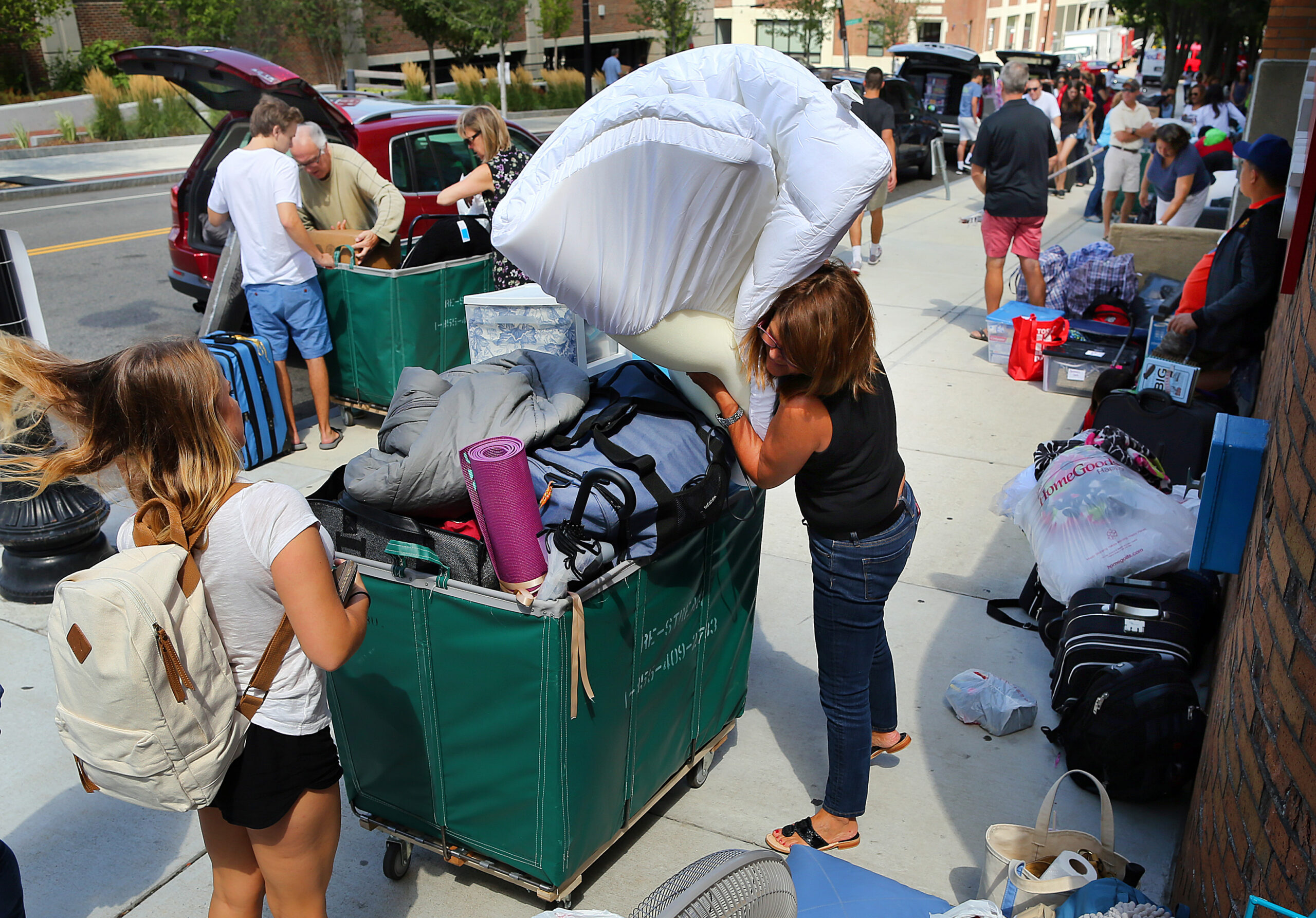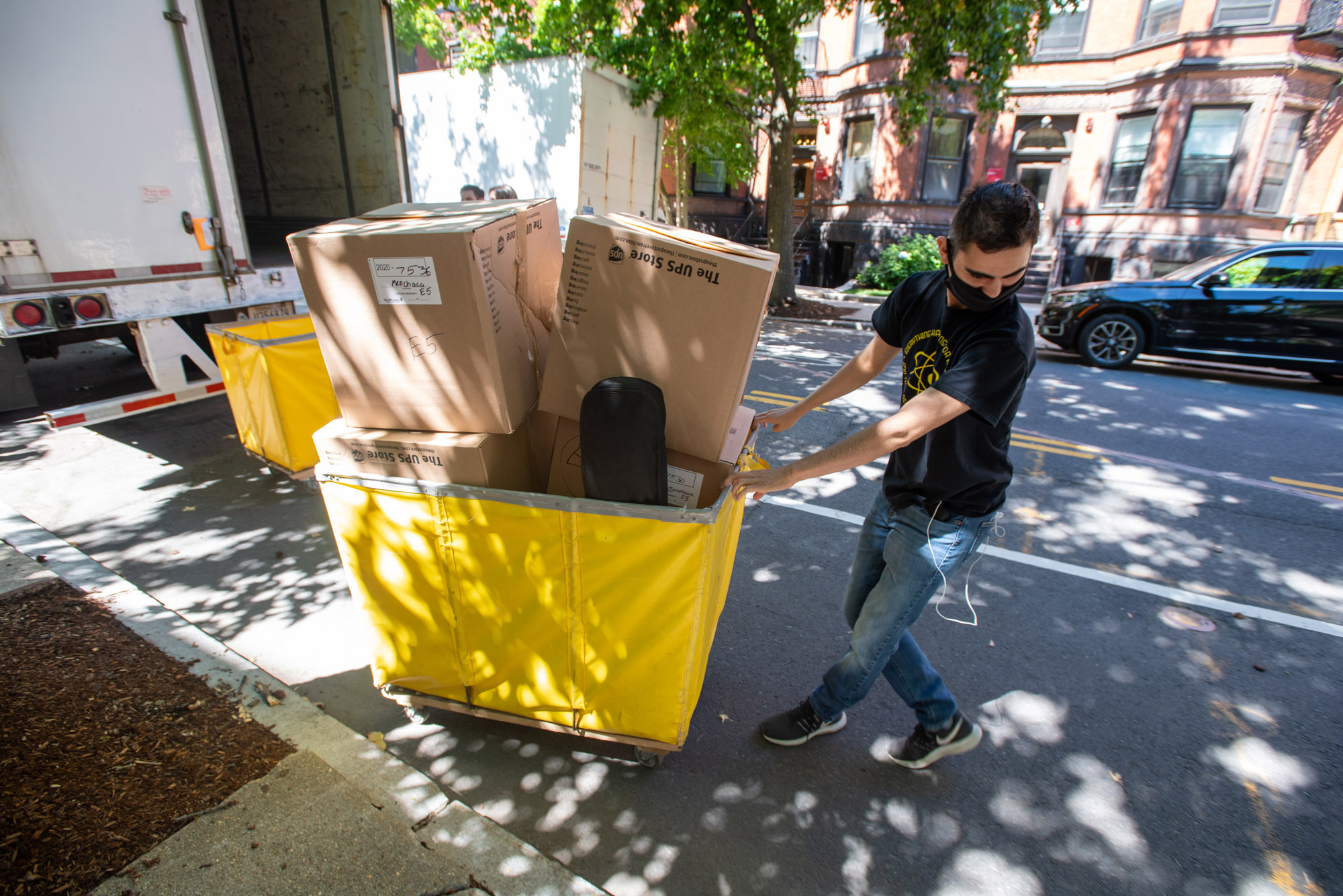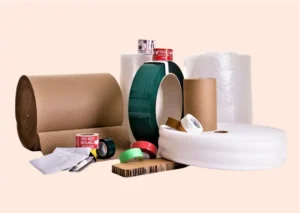Table of Contents

Key Takeaways
-
Start planning your move well in advance to minimize stress and last-minute hurdles.
-
Declutter your belongings before packing to simplify the process and reduce moving costs.
-
Label boxes clearly and create an inventory to streamline the unpacking process.
-
Choose a reputable moving company by comparing quotes and checking reviews.
-
Set up essential services in your new home before moving day to ensure a smooth transition.
Top 10 Relocation Problems
|
Relocation Problem |
Solution |
|---|---|
|
Scratched up Furniture |
Use Moving Blankets to protect items during the move |
|
Back Injuries |
Utilize Hand Trucks or Dollies to move heavy objects safely |
|
Breaking Boxes |
Secure boxes with Packing Tape to prevent breakages |
|
Items Shifting During Transportation |
Use Ratchet Straps to secure items in the moving truck |
|
Scraped and Scratched Doorways |
Protect doorways by being cautious and using proper moving techniques |
|
Deciding What to Take Along |
Categorize items based on necessity, frequency of use, and sentimental value |
|
Finding Reliable Movers |
Research and choose reputable movers for a smooth relocation experience |
|
Create a realistic moving budget to manage expenses efficiently |
|
|
Setting up the New Home |
Prioritize unpacking essential areas first and have a plan for each room |
|
Handling Utilities and Address Changes |
Update addresses and transfer utilities efficiently to avoid disruptions |
Simplify Your Strategy
When you’re looking at the mountain of tasks ahead of your move, it’s easy to feel overwhelmed. But don’t worry—I’m here to guide you through this maze. The first step? Start early. As soon as you know you’re moving, begin the process. This gives you ample time to plan, which is crucial for a smooth transition.
Begin by making a checklist of everything that needs to be done, from hiring movers to changing your address. This list is your roadmap to a hassle-free move. Most importantly, remember that the more organized you are, the less daunting the moving process will be.
Because moving can be expensive, creating a budget is essential. It’ll help you keep track of your expenses and ensure you don’t overspend. Consider costs like packing supplies, professional movers, and any new furniture you might need.
Essential Packing Tips
Let’s talk about packing—often the most time-consuming part of moving. My golden rule is to declutter before you even touch a box. Why move something you don’t need? Hold a garage sale or donate items you no longer use. Your future self will thank you when you have fewer boxes to unpack.
Now, for the packing itself. Invest in quality boxes and packing materials. Your belongings are going on a journey, and you want them to be safe. Bubble wrap, packing peanuts, and sturdy boxes are your best friends here. But don’t forget to be environmentally conscious! Use towels and linens to wrap fragile items—it’s a double win as you pack two things at once.
And here’s a pro tip: label your boxes by room and contents. This makes unpacking a breeze because you’ll know exactly where everything goes. Besides that, create an inventory list. It might seem like extra work now, but it’s a lifesaver if something goes missing.
Transportation Tactics
Deciding how you’ll get your belongings from point A to point B is critical. If you’re moving locally, you might be tempted to do it yourself. However, for long distances, a reliable moving company is worth its weight in gold.
When selecting a moving service, don’t just look at the price. Consider their reputation, services offered, and insurance policies. It’s better to pay a bit more for a company that you trust to handle your possessions with care.
And remember, if you have special items like pianos or antique furniture, make sure the movers have the expertise to handle them. You can’t put a price on peace of mind.

What are two problems anyone face in relocating?
Even with the best planning, you’re likely to run into challenges when relocating. One of the biggest hurdles is moving day chaos. With so much happening at once, it’s easy to get stressed. The key to managing this is to stay organized and keep a cool head.
1. Maneuvering Through Moving Day Chaos
-
Have a clear plan for the day, including a timeline of when movers will arrive and when certain tasks should be completed.
-
Prepare an essentials box with items you’ll need on the first day, like toiletries, a change of clothes, and important documents.
-
Ensure you have a plan for kids and pets. Moving day can be just as stressful for them, and you’ll want to keep them safe and occupied.
Another common problem is the sheer physical toll moving can take. Lifting heavy boxes and furniture is exhausting and can lead to injuries if not done correctly. Therefore, it’s essential to use proper lifting techniques or hire professionals who are trained to handle heavy lifting.
2. Organizing Your New Space
Once you’ve conquered moving day, you’re faced with the challenge of organizing your new space. It can feel like a puzzle, figuring out where to place your furniture and how to arrange your belongings.
Start with the essentials—set up your bedroom, bathroom, and kitchen first. These are the spaces you’ll use most in the first few days. After that, you can take your time with other rooms. And because you’ve labeled your boxes, you’ll know exactly where to find everything.
Unpacking can be an opportunity to re-evaluate your possessions and their place in your new home. It’s a chance to start fresh and create a space that truly feels like your own. Besides that, getting organized from the get-go will save you time and headaches later on.
Packing Techniques for Fragile Items
When it comes to fragile items, it’s all about layering protection. First, wrap each piece individually with bubble wrap or packing paper. Then, fill the bottom of your boxes with a cushioning material, like crumpled paper or foam peanuts. Place the heaviest items at the bottom and lighter ones on top. Before sealing the box, add another layer of cushioning on top. This ‘sandwich’ technique ensures your fragile items are snug and secure.
Another smart move is to use smaller boxes for heavier items like books or dishes. It might seem counterintuitive, but smaller boxes prevent overpacking and make them easier to carry. And remember, if you’re ever in doubt about how to pack a particular item, don’t hesitate to reach out for professional advice. Your cherished belongings are worth the extra care.
Labeling for Easy Unpacking
Labeling is a lifesaver when you arrive at your new home tired and ready to settle in. Use a thick marker to write the contents and the room destination on each box. If you want to level up your organization game, color-code your labels. Assign each room a color and stick a corresponding colored sticker on the boxes. This visual aid helps movers quickly identify where each box belongs, saving you the hassle of directing traffic on moving day.
It’s also helpful to note on the box if the contents are fragile. A simple “FRAGILE” or “HANDLE WITH CARE” can prevent mishaps. And if you’re dismantling furniture, keep all the screws and small parts in a labeled bag, and tape it to the piece it belongs to. This will save you from the frustration of hunting for parts when reassembling.

Selecting a Reliable Moving Service
Choosing the right moving service is crucial for a stress-free move. Start by asking friends and family for recommendations and reading online reviews. A mover’s reputation speaks volumes about their reliability and the quality of service you can expect. Then, ensure they are licensed and insured—this protects you against potential loss or damage to your possessions during the move.
Evaluating Mover Credentials
When you’re trusting a company with all your worldly possessions, you want to be sure they’re up to the task. Check their credentials thoroughly. Are they accredited by relevant industry associations? Do they have a good record with the Better Business Bureau? These are signs of a reputable company that takes their responsibility seriously.
Also, verify their physical address and contact information. A legitimate business should have a physical location and a responsive customer service team. This transparency builds trust and ensures you have a point of contact throughout your moving journey.
Comparing Quotes and Services
Don’t settle for the first quote you receive. Get estimates from at least three different moving companies to compare prices and services. But beware, the cheapest option isn’t always the best. Scrutinize what’s included in the quote. Are packing services, insurance, and fuel costs covered? A comprehensive quote that includes these services might save you money and headaches in the long run.
Remember, it’s not just about the cost. Consider the value you’re getting. A company that offers to pack and unpack your belongings, provides quality moving supplies, and has an excellent customer service track record might be worth the extra investment.
Planning Your Move With Professionals
Once you’ve chosen your moving company, work closely with them to plan your move. Provide them with details about your inventory, especially large or unusual items that require special handling. Discuss access issues, like narrow driveways or stairs, so they can prepare accordingly. The more information you provide, the smoother the move will be.
Contact Us for Expert Assistance
If you’re feeling overwhelmed by the moving process, you’re not alone. We’re here to help. Our team of experienced professionals can guide you through every step, ensuring that your move is as effortless as possible. From packing to transportation to setting up your new home, we’ve got you covered. Don’t hesitate to reach out and Contact Us for expert assistance.
Setting Up Your New Home: A Systemized Approach
Arriving at your new home is an exciting moment, but it can quickly turn chaotic without a plan. Start by cleaning the space before anything is moved in—it’s the only time your home will be completely empty, making it easier to reach every nook and cranny. Then, prioritize setting up the rooms you’ll need first, like the bathroom, kitchen, and bedrooms. For more detailed strategies, consider exploring smart home automation systems to enhance your new living space.
When unpacking, tackle one room at a time to prevent burnout. Unpack the essentials first, and then gradually fill in with decor and less critical items. It’s also the perfect time to consider the flow of your space. Arrange your furniture to optimize the layout and functionality of each room.
Room-by-Room Unpacking Strategies
Each room has its own unpacking nuances. For the kitchen, start with the essentials like the fridge and stove. Then move on to daily use items such as dishes and cutlery. Leave the less frequently used appliances and servingware for later. In the bedroom, set up your bed first to ensure you have a place to sleep at the end of a long day.
Optimizing Your Living Space
As you unpack, think about how you can best use the space. Use shelves and storage solutions to keep your home organized and clutter-free. Consider the flow of traffic in each room and arrange furniture to accommodate it. This not only makes your home more functional but also more inviting.
Another aspect to consider is lighting. Good lighting can make a room feel more spacious and comfortable. As you set up lamps and fixtures, think about the activities you’ll do in each space and ensure there’s adequate lighting for them.
And don’t forget about your home’s security. Check that all locks are functioning and consider installing a security system if necessary. It’s important to feel safe in your new environment.
Making Your New Place Feel Like Home
Finally, add those personal touches that make a house feel like a home. Hang up photos, display mementos, and arrange your favorite books on the shelf. Plant some flowers or set up a small herb garden. It’s these little details that will bring warmth and personality to your new space.
Remember, moving into a new home is a journey. Take your time to settle in and make the space your own. If you need assistance or guidance along the way, we’re just a click away. Contact Us today and let us help you make your new house a home.
Next Steps to a Stress-Free Relocation
Relocating doesn’t have to be a source of anxiety. With the right approach, you can transform it into an organized, efficient process. Start by decluttering your current space and donating or selling items you no longer need. This not only simplifies packing but also makes setting up your new home easier and more enjoyable.
Next, create a detailed timeline for your move. Include key tasks such as packing, hiring movers, and setting up utilities in your new home. Stick to this timeline to keep everything on track. Remember, preparation is the key to avoiding last-minute chaos.
Contact Us Today to Get Started
If the thought of planning and executing a move seems daunting, we’re here to help. Our team specializes in making relocations as smooth and stress-free as possible. From providing packing materials to handling the heavy lifting, we’re ready to assist with every aspect of your move. Don’t go it alone—Contact Us today and take the first step towards an effortless relocation experience.

FAQ: Your Top Relocation Questions Answered
When planning a move, it’s normal to have questions. Here are answers to some of the most common concerns our clients have. These tips will help you navigate the moving process with confidence.
Whether you’re curious about the best time to move, how to choose a moving company, or ways to keep your belongings safe, we’ve got you covered. And if you have more questions, our team is always ready to provide personalized advice.
Let’s dive into these frequently asked questions and clear up any uncertainties you might have about your upcoming move.
Example: One of our clients was unsure about the best time to schedule their move. After consulting with us, they decided on a mid-week, mid-month date. This choice helped them avoid the higher costs and busier schedules associated with weekend and end-of-month moves.
How do I choose the best moving date?
To choose the best moving date, consider factors like weather, work schedules, and school calendars. Aim for a time when you and your family can take a few days off to settle into your new home without rushing. Mid-month and mid-week dates can also be more cost-effective, as demand for movers is typically lower. For more detailed strategies, check out our guide on lowering moving expenses with cheap relocation strategies and cost-saving tips.
What should I look for in a moving company?
When selecting a moving company, look for reliability, transparency, and positive customer feedback. Ensure they are licensed and insured, and ask for a detailed quote that outlines all services provided. It’s important to choose a company that communicates clearly and has a track record of punctuality and care.
Don’t hesitate to ask for references or proof of past successful moves. A credible moving company will be happy to provide this information.
How can I ensure my belongings are safe during the move?
To keep your belongings safe, use sturdy packing materials and techniques suited for each type of item. Label boxes clearly, and consider purchasing moving insurance for additional peace of mind. Choose a moving company with a strong reputation for safety and care, and communicate any concerns you have about specific items.
What steps can I take to reduce moving day stress?
Reduce moving day stress by preparing well in advance. Pack an essentials bag with items you’ll need immediately upon arrival at your new home. Establish clear communication with your movers and have a plan for pets and children. Stay hydrated, take breaks, and keep a positive mindset throughout the day.
Most importantly, remember that it’s okay to ask for help. Whether it’s from friends, family, or professional movers, support can make a significant difference in managing the day’s challenges.
Who should I notify about my change of address?
When you move, it’s crucial to notify several parties about your change of address. Start with the post office to ensure your mail is forwarded. Then, update your address with government agencies, financial institutions, insurance providers, and subscription services. Don’t forget to inform friends and family as well.



